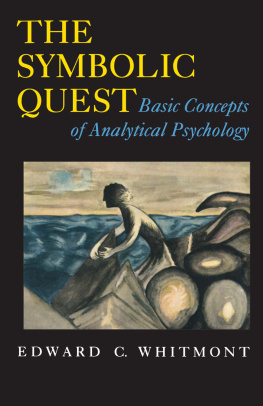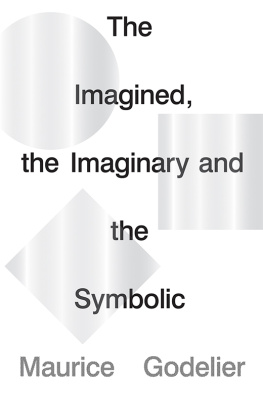First published 1964 by Transaction Publishers
Published 2017 by Routledge
2 Park Square, Milton Park, Abingdon, Oxon 0X14 4RN
711 Third Avenue, New York, NY 10017, USA
Routledge is an imprint of the Taylor & Francis Group, an informa business
Copyright 1964 by Orrin E. Klapp.
All rights reserved. No part of this book may be reprinted or reproduced or utilised in any form or by any electronic, mechanical, or other means, now known or hereafter invented, including photocopying and recording, or in any information storage or retrieval system, without permission in writing from the publishers.
Notice:
Product or corporate names may be trademarks or registered trademarks, and are used only for identification and explanation without intent to infringe.
Library of Congress Catalog Number: 2006045624
Library of Congress Cataloging-in-Publication Data
Klapp, Orrin Edgar, 1915-
Symbolic leaders: public dramas and public men / Orrin E. Klapp.
p. cm.
Includes bibliographical references and index.
Originally published: [New York]: Minerva Press, [1968, cl964].
ISBN 0-202-30867-7 (alk. paper)
1. Leadership. 2. Role playing. I. Title.
HM1261.K53 2006
303.3'4dc22 2006045624
ISBN 13: 978-0-202-30867-8 (pbk)
This book seems, at first glance, to be merely about celebrities and their doings. Actually, it is a study of an important form of leadership, one that has not, I believe, been sufficiently recognized, by scholars at least (the masses, of course, have always recognized it). A symbolic leader is one who functions primarily through his meaning or image (for example, Gandhi meant much as a person to the masses of Indiaindeed, of the earthregardless of his official status). Thus I make a distinction between a symbolic leader and an organizational leader; the latter works within a certain social structure or organized group and may not mean much to people otherwise.
The book discusses the "burdens of fame," not merely as the celebrity's problem, but in terms of the pressures and demands that tell him he is doing something for people, even that he has what amounts to a profession. It tells how symbolic leaders emerge, that is, how hitherto unknown people become symbolic by a "hit," usually a lucky accident, in which they find their function, and it analyzes the kinds of dramatic encounters that are likely to make "heroes" or "villains" or "fools." The book portrays the ups-and-downs of public images, crises and role reversals, in which parties of a public drama may exchange roles without meaning to. It then describes some practical problems of "role strategy" in public relations. A final chapter deals with the public drama, its implications for change and instability in modern society.
I cannot properly acknowledge all my indebtedness to those, including many college students, who have helped me with this book, but I wish particularly to mention Herbert Blumer, Anselm L. Strauss, and Howard S. Becker.
Orrin E. Klapp
Contents
Chapter One. Living With A Public Image
It might be a relief to be finished fame may go by andso long, I've had you.
Marilyn Monroe
The Age of Celebrities
A celebrity does not have an easy life these days. He has his part to play, just as does the policeman and the doctor. He has to be a Symbol for a great many people that he does not know. He cannot tell exactly where his private life ends and his public life begins. He has to worry about his "image" or hire someone to manage it for him. He is a central figure in a great modern institutionthe cult of celebrities built around the personalities of people who have for some reason been glorified by the image-making and fame-building processes.
The age of celebrities began with the development of the American movies and the appearance of Hollywood as the star capital of the world. Before that we knew fame, to be sure and the theater had its Ole Bulls, Sarah Bernhardts, and Jennie Lindsbut never before had such a mass shrine been constructed as the movie, with its many opportunities for very ordinary people (like Rudolph Valentino, Greta Garbo, and Fatty Arbuckle) to "make it" to fame and popular idolization. Later, radio, phonograph records, and television became magic pumpkins for the ride to fame. As a result, our celebrity elite is today so vast that Cleveland Amory has edited its Register, a volume resembling a telephone book listing alphabetically all the people who have become famous in America. Special commentators and magazines watch their doings closely and keep the public informed about them.
One result of this focus of society is that the young man of today might be described as a born celebrity-watcher. He has been brought up on a diet of star dust since he was knee-high to a television set, which was probably his baby-sitter. He is likely to be a mass-communication addict, who keeps one eye on the television while his ear is tuned to a radio if possible. He is a member of some audienceat home, in a theater or stadium, or parked in his carseven nights a week.
That is why the celebrity himself has such a big job. He must rise to the demands made on the symbol. He must be prepared for a life that is in many ways a contradiction of old-fashioned ideas about privacy and integrityfor example, that a man should "be himself." A few illustrations from the careers of public figures will present the problem from the professional celebrity's point of view. On the other hand, many who are thrust before the public eye are amateurs, puzzled, sometimes indignant, at the demands made on them.
The Burdens of Fame
The attraction of fame is a built-in part of the American dream. Yet one of the most characteristic symptoms of having actually become a celebrity is a certain disillusionment, which sets inafter the first thrill of seeing one's name in headlines upon discovering the obligations and inconveniences of being known by everybody everywhere. A clich among artists is that the hardest thing to survive is success. Marilyn Monroe spoke for all entertainers in a classic statement in which she described herself as a stage-struck girl fitting her shoe into actors' footprints before Grauman's Chinese Theatre in Hollywood, her subsequent surprise at seeing her own name in lights for the first time, and finally her disillusionment. These symptoms are not the tragedy of a particular person. It might be said that the stresses of fame are fairly constant, though the ability of people to bear up under them varies. If some seem to thrive in the limelight, it does not follow that conflicts are not present.
Disillusionment with being a celebrity is, in fact, a result of many irritations, large and small, that dissipate the charm of a public role. One of the most important is difficulty in maintaining a "private life." The person who suddenly becomes famous rarely abandons his privacy with good spirit, to accept life in a goldfish bowl. Rather, he wants to have it both ways. He will complain of intrusions, perhaps, as did Frank Sinatra in his courtship of Ava Gardnerfeuding with reporters, angrily dodging them with fisticuffs and camera-breaking. Lindbergh, too, was hounded by the public; reporters pried into the secrets of his household; people came up to him while he was eating in a restaurant and counted the peas on his fork. Harry Truman, even while President, liked to think of himself as an ordinary man and once refused to revisit a church where the minister had "made a show" of his attendance. Perhaps Truman










